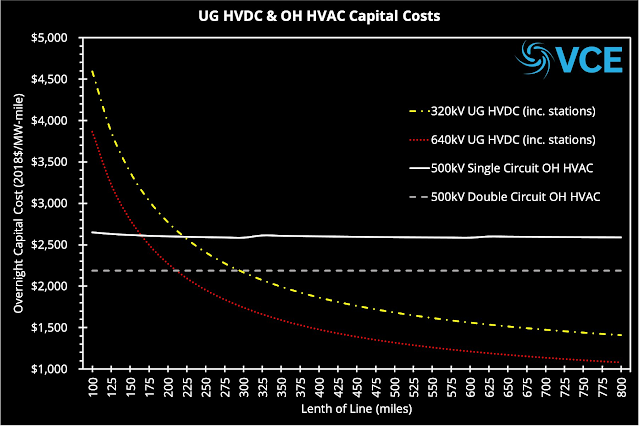So I'm resurrecting this blog. Originally it was to chronicle some of my more extreme outdoor adventures but now I'm going to use it to record and discuss some major issues I'm seeing pop up over the future of energy and power systems in the US. I'm seeing the discourse dominated by "experts" who are bending over backward to push a narrative and frankly lack a fundamental understanding of the role energy plays in human society.
At a basic level the role of energy in human society has remain unchanged since the taming of fire. First and foremost humans use energy to ensure habitability of environments we did not evolve to survive in. Ignorance of this basic fact of existence is what led to several hundred deaths in Texas in Feb of 2021. I will go into detail as to the causes of the Texas disaster in a later post as well as the disturbingly incorrect conclusions some experts have come up with in a later post.
The purpose of this post, and I'll come back to it from time to time, will be to catalog some rather terrifying assumptions grid-system modelers are using in there models. Some of these compound with other errors and the fact that error bars are missing from most of these results is frankly unacceptable.
Solar Degradation Rates:
A recent study found that solar panel degradation rates are roughly 2x higher than those used by major organizations such as NREL. The report also indicates that extreme weather events, such as wildfire smoke and hailstorms can have a far more significant impact on solar output than many take into account. Even though these differences might seem small, 1% annual degradation vs 0.5%, or 6% output reduction from wildfires, they add up and compound with each other. This compounding behavior ends up becoming rather significant when calculating reserves in extreme scenarios, arguable the most important planning scenarios for a grid system plan. [1]
UHVDC Underground Transmission Costs:
This stems from a discussion I had with Dr. Christopher Clack(@DrChrisClack) on twitter the other day about transmission costs. Dr. Clack is CEO of Vibrant Clean Energy, a company that provides large scale grid modeling solutions. Well after going back and forth he finally shared the data that he got from a “Tier 1 supplier” on costs of underground UHVDC vs overhead AC transmission. His claim, based on this data, is that underground UHVDC is cheaper than overhead AC and getting more and more affordable. I don’t think he, or anyone at his company truly understands what goes into undergrounding a cable or why it is so much more expensive than doing overhead lines. Anyway here is his data:

I think Mark James (@james_mark) and I finally uncovered the source of his confusion. The data he was given is likely just the cost of cable, and maybe conversion stations, not the cost of trenching, easements, etc. Our evidence for this comes largely from this tweet:

Now, looking into this further the 500 million euros is just for 1/4th the total cable and cable install costs. The project costs are projected at 10 billion euros for 700km of 2GW resulting in a cost per MW-Mile of nearly $14,000/MW-Mile, an order of magnitude higher than Dr. Clack’s “Tier 1” supplier data. [2]
Capacity Factor Estimations too high:
Another issue I've noticed is that many of the integrated grid models that utilize high resolution weather data to compute capacity factors end up with higher than realistic capacity factors for wind and solar. I've seen this with output from a McKinsey model and more recently a VCE model. Computing capacity factors from reports can be difficult if the report only includes graphical representations of installed capacity and total generation by source. It seems like no one really likes to included the capacity factors that their models spit out even though this should be an incredibly useful sanity check.
I ran a quick check on the VCE data
here and found something interesting. They use relatively conservative values for wind but high values for utility scale PV. (W: 27%, PV: 20.2%) However, for the high renewable cases from 2035 - 2050 they use significantly higher wind and slightly higher PV capacity factors (W: 38.5%, PV: 21.6%). Renewables.ninja seems to indicate wind should be closer to 30-33% depending on siting and PV should be closer to 17% for fixed and 20.4 for single axis. These seem high but it's obnoxiously difficult to find statewide capacity factors for wind and solar from year to year. The only real option it seems is to pull the EIA data and process it myself.
I've started to notice even renewables.ninja is giving much higher capacity factors for solar than they used to. For a fixed tilt array at the site of the Los Alamos County 1MW PV array on South Mesa renewables.ninja estimates a capacity factor of 21.4%, Los Alamos County gives a capacity factor for that facility of ~18%. This difference results in nearly a 19% difference in annual energy output... [3] In a report that NREL did for LANL they estimated that CFs for Fixed Tilt and Single Axis would be 14.7% and 17.5% respectively, much much lower than the renewables.ninja model. [4]
Another note, we should expect to see capacity factors decrease in models with high VRE penetration as the most favorable sites are utilized early on in the process.

Solar Cost Floors too low:
Here are the IRENA past costs and future projections (2030 and 2050) for solar PV installed costs. [5]

Honestly, a simple exponential decay + offset gives a lower bound of about $730/kW installed based off of NREL data. I actually expect to see solar hit a floor in the next few years and begin increasing in cost due to raw material supply chain constraints, land acquisition costs increasing, labor costs increasing, etc.

[1] https://www.pv-tech.org/built-solar-assets-are-chronically-underperforming-and-modules-degrading-faster-than-expected-research-finds/
[2] https://www.tennet.eu/news/detail/suedlink-contract-awarded-for-plastic-insulated-525-kv-underground-cables/
[3] https://www.losalamosnm.us/common/pages/DisplayFile.aspx?itemId=7215315
[4] https://www.energy.gov/sites/prod/files/2019/03/f61/NREL%202015a.pdf
[5] https://irena.org/-/media/Files/IRENA/Agency/Publication/2019/Nov/IRENA_Future_of_Solar_PV_2019.pdf